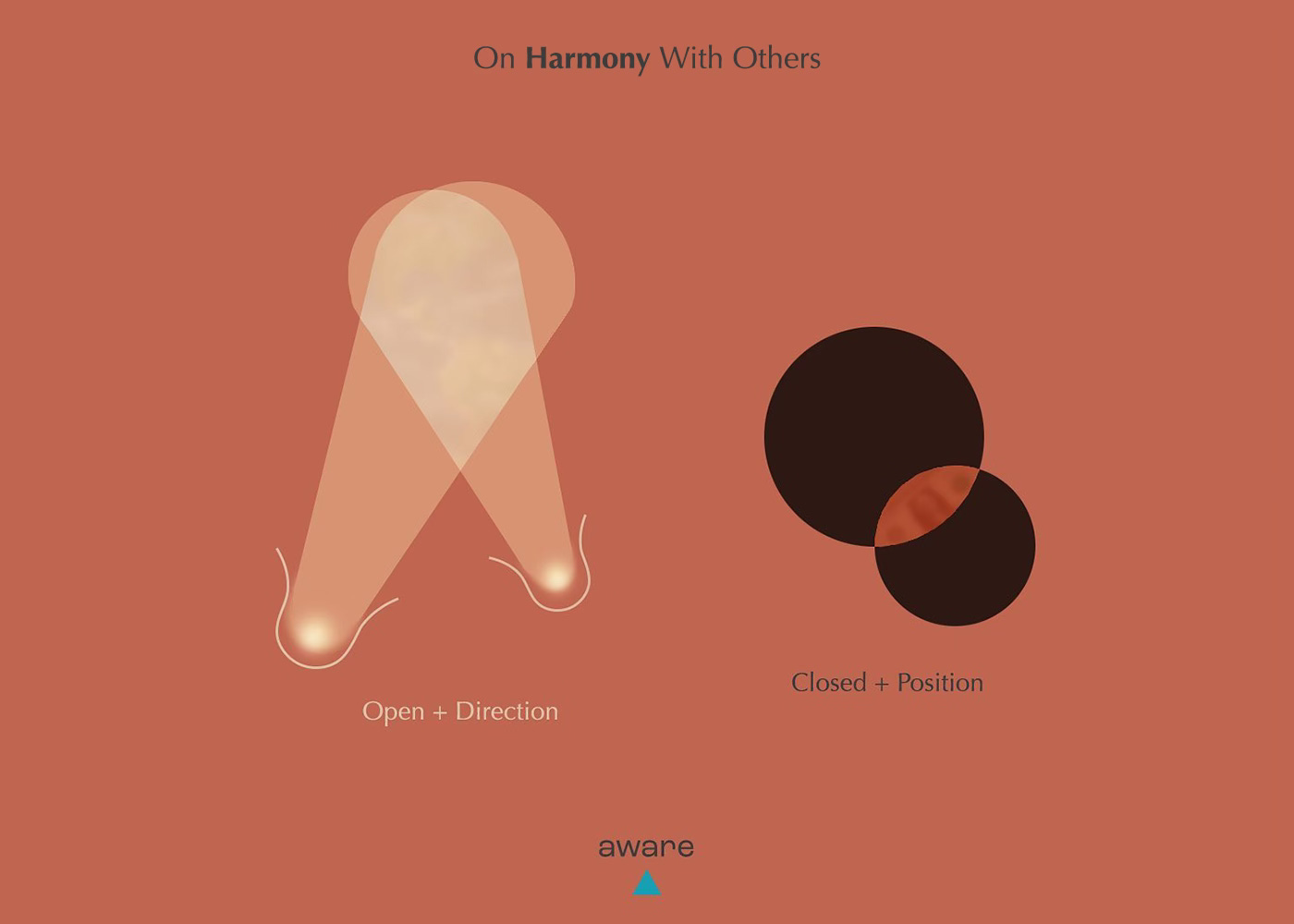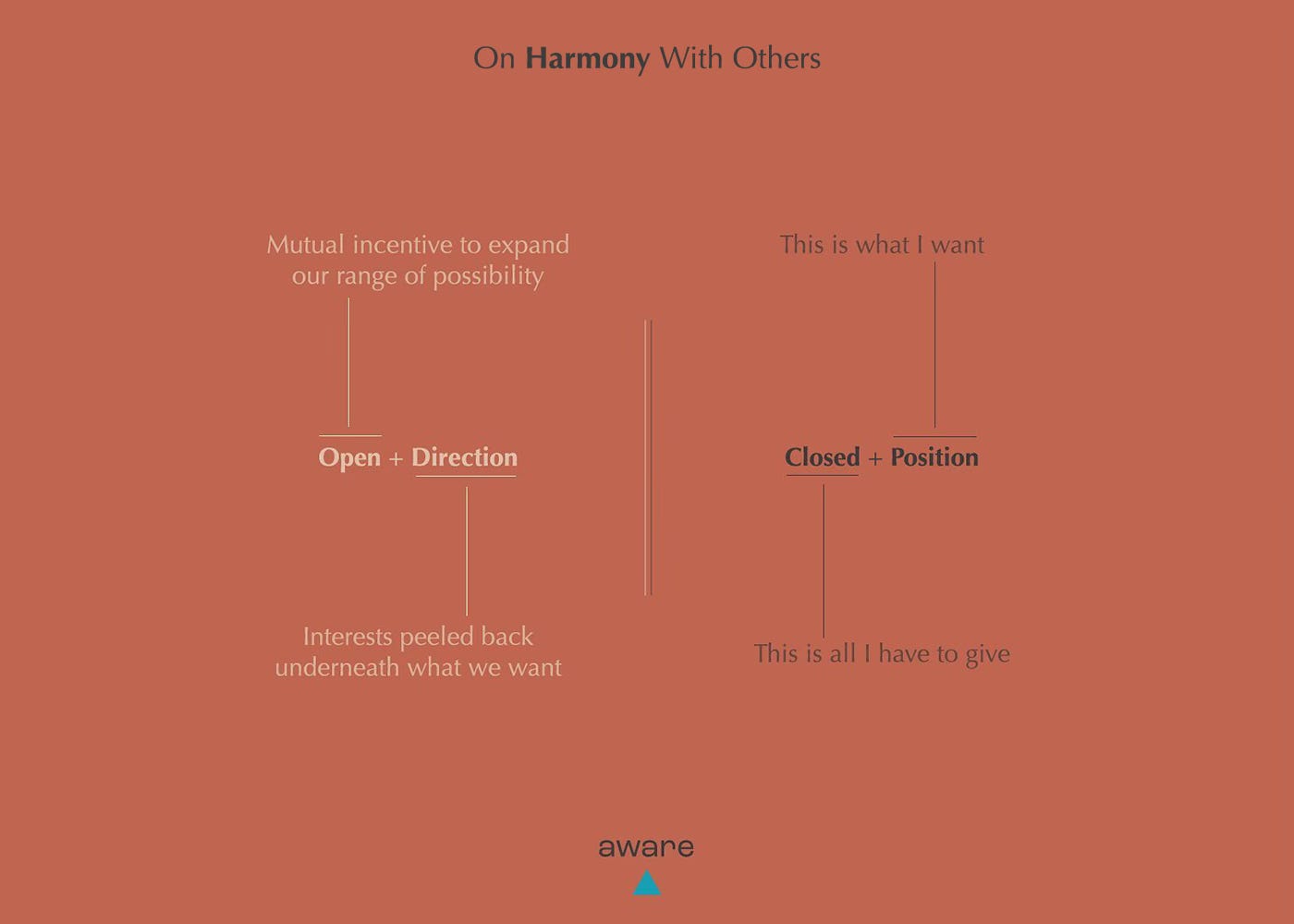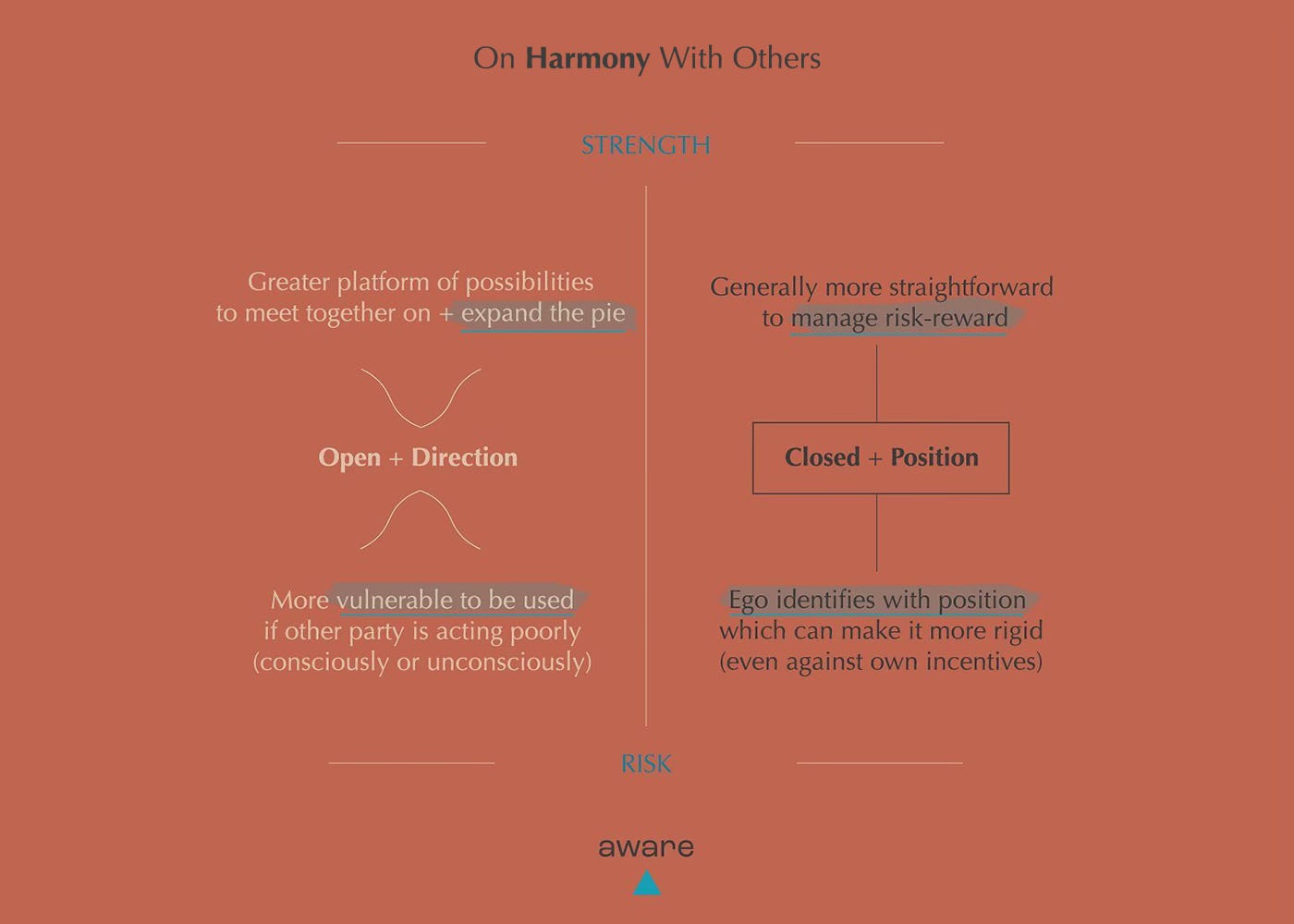Like it or not, you are a negotiator. Everyone wants to participate in the decisions that affect them and feel good about the outcomes. And there are two principal ways in which we can go about a negotiation, that is, in arriving at a place of harmony with others.
One way to approach a negotiation involves being closed to the position we want and willing to transact within that space. The other involves being open to the interests we have and willing to intersect in that direction with another’s interests wherever that may be. The former is a transactional process that looks to divide up the pie, generally making it easier to manage our risk, and tends to be a zero-sum game. The latter is an organic process that looks to grow the pie and is, potentially, highly expansionary. Both have unique strengths and risks.
What do we mean by position and interests? Here are two general examples.
Position: I am looking to raise $500,000 for my business.
Interests: I am looking to take my business to the next step in New York, and hire a developer for around $70,000 to build our product, a business manager for $60,000 to establish our footprint in the industry, and invest in outsourced marketing and sales at a monthly rate of $8,000. We need at least 2 years of runway to get the business moving.
Position: I want to go to Ibiza in first two weeks of June
Interests: I like the relatively untouched quality of the Mediterranean before the summer rush begins, have been going to north part of Ibiza for a long time. It feels intimate and the energy of the island makes me both excited and grounded and we can mix up our activity there. I’ve already organised my scheduling with work.
Position is fixed and states in exact terms what we want from the top-down and the parties generally tend to continue a back-and-forth of compromise and argument, until possibly arriving at some point of agreement.
Interests break down the process into its deeper layers of what we truly want from the bottom-up and the parties begin to creatively search for ways to maximise their mutual gains by combining shared interests and which others they will compromise on or leave out
Focusing on interests opens us up
There is a period of preparation before the actual discussion of agreement takes place. We have to look into the layers beneath what we want and also have the courage to express it. And precisely because of this, it allows the other party to see more clearly what you want. The process is more fluid, with moving parts, which can be both overwhelming, yet equally therapeutic. By focusing on inventing mutual options from shared interests, the overwhelming aspect starts to be managed. Our brain naturally likes organic, flexible opportunities (without too much “overwhelming” choice!) It is often, if not always, far easier to find a place of common ground this way, after doing the “hard” preparatory work of understanding and sharing the peeled back layers. Moreover, we generally tend to expand the pie this way, a 1+1=3 scenario. Our energy is being used for inventing creative solutions, and in fact, in the process of doing so, we tend to find ourselves more willing to compromise toward harmony as we feel the whole pie is expanding. Open + direction negotiation works remarkably when both parties have the freedom *and* discipline to explore, however can readily break down when one party assumes a give-take mentality and seeks to take advantage (knowingly or not) of the other parties vulnerability. IT is useful to explore OBJECTIVE criteria for how both needs are being met to mitigate the risks of being exploited. This also tends to offer opportunities for highly differentiated levels of power to find a common ground and work together.
Focusing on positions allows us to remain closed
We believe we are clear on what we want and can then decide whether to take a stubborn hard approach to the negotiation, or a soft compromising one. It is more straightforward for us to manage risks, the situation is more concrete, and we believe we know exactly what we can give up as well as the reward we want to receive, and focus entirely on this. The primary energy we expend here is in focusing on remaining firm and closed to our position, in keeping up the walls around our position, in comparison to dealing with vulnerability and array of options with the open + direction approach. Closed + position negotiation works very well to definite our reward-risk, and can be a faster approach to reaching agreement. Dangers arise in situations where one or both parties are not able to distance their ego from the process, and begin to identify with their position, doubling down simply to “save face”, when it is not the best interests of either party. It can also lead to very imbalanced results when there is a significant skew of power (inappropriately used) between parties.






